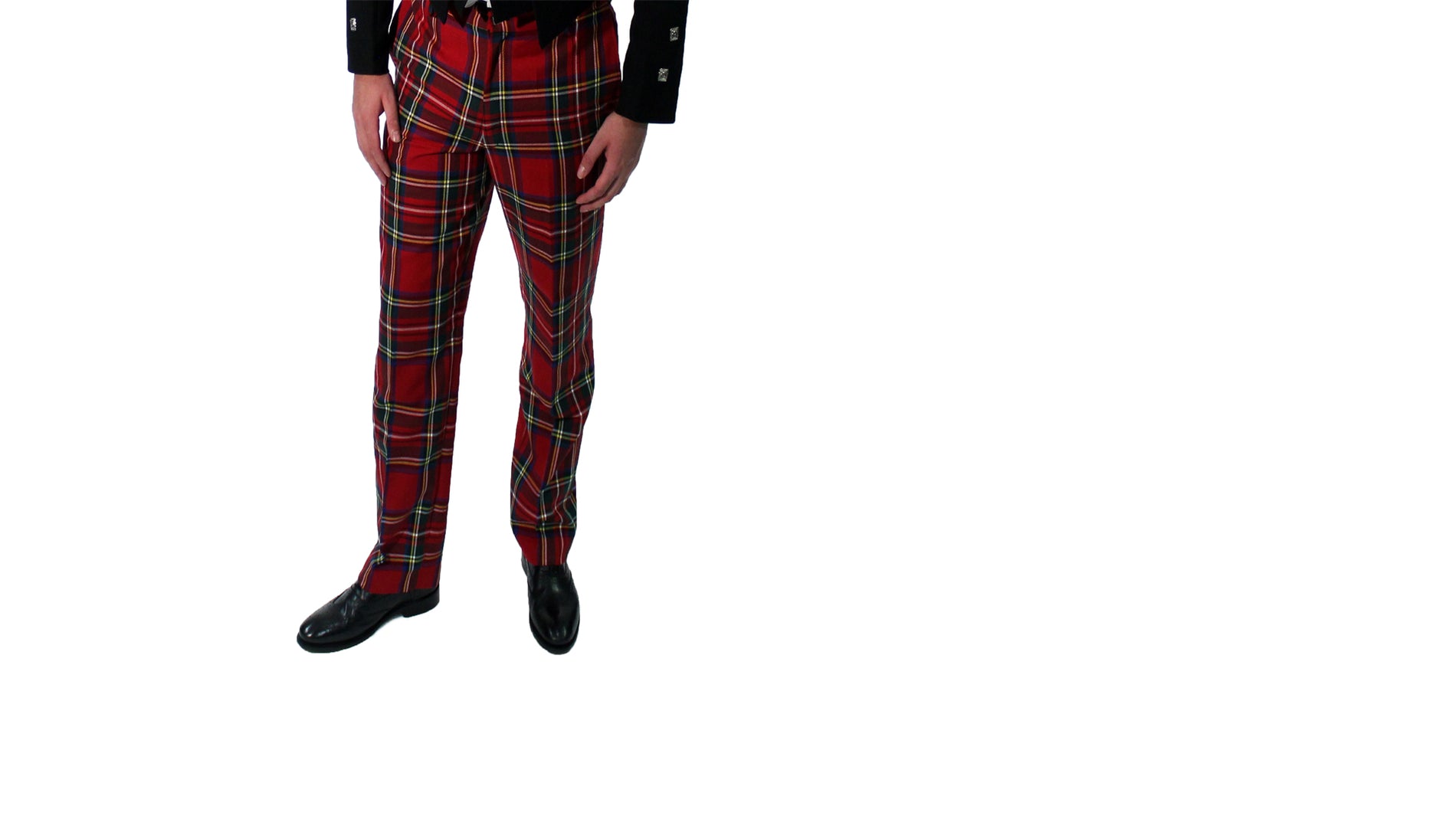Where did Tartan Trews come from?

We all love a good pair of Tartan Trews don't we? They are the perfect pair of trousers for those who perhaps don't fancy wearing a kilt but still want to wear something with great Scottish historical significance. Trews have now been the peak of Scottish fashion and highland dress for a while but have you ever wondered about their origin? Join us as we explore the history of trews.
Trews, also know as "Truis" and "Triubhas" (these words are anglicised versions of the word "trousers") are basically a pair of tartan trousers that the user wears to cover their legs. The first use of Trews dates way back to the early 1500's where they were tartan cloth trousers used predominantly as a way to keep warm during the winter. Although the kilt was very popular during this era and worn most of the time, it was not very practical to wear during the winter season due to it not fully covering the wearers legs thus leading to the creation of trews.
Moving into the 1600's trews changed drastically. These trews were influenced heavily by "hose" from the renaissance period. Hose were essentially skin tight clothing for the lower body very similar to clothing such as tights and leggings that we have today. These trews were cut slightly differently to the more obtuse trews from the 1500's and did a better job at stretching and fitting the users shape and body. It was very clear that trews were definitely on the way up!

- An example of Trews commonly worn during the early 16th Century
Another type of trews are military trews. Historically tartan trews were only worn by soldiers in the Highlands of Scotland with the lowlands wearing the standard British military uniform. This completely flipped with the establishment of the Royal Regiment of Scotland in 2006. Military trews were now used by members of the Lowlands area of the Scottish army (around Edinburgh, Glasgow and Stirling etc), whereas in the Highlands they would wear kilts instead of trews. This has changed slightly in more recent times however as trews have started to be worn occasionally by the Highland Army alongside the Kilt.
In the early 1800's the King of Britain - King George IV paid a visit to Scotland and ordered the return of highland dress in the military after a brief period of absence. For the outfit he decided to choose a highland bonnet, a red uniform coat and replacing the kilt with a pair of tartan trews! The trews used a new form of the famous Royal Stewart tartan called "Prince Charles Edward Stuart", which was influenced by the public's love for the Jacobite movement.
Due to the military use of the tartan trews in the lowlands area of Scotland, many civilians have started to wear them. This has led to a common perception that trews are more commonly worn in the lowlands than the kilt, with the kilt being more common in the highlands. While this may be true, there is a finer balance between the two nowadays, with people in both the lowland and the highlands enjoying both the trews and the kilt in equal measure.

- Military Trews in use by the Royal Regiment of Scotland
In more modern times Trews are commonly used for many activities. One of these activities is Highland Dance where tartan trews feature predominantly. The Seann Triubhas dance in particular is said to symbolise the kicking off of the trews in favour of the kilt. It has also been suggested that the dance may have something in common with the Jacobite rebellion of 1745 but this is still yet to be confirmed. Trews are still used often in Highland Dance especially during the Winter when it makes more sense to wear them than a Kilt.
The most popular activity to feature trews however has to be golf. Golf of course has deep roots in Scottish history so this is not surprising. The trews featured in golf are named "plus fours" and due to the name extend 4 inches below the knee. These types of trews are commonly worn with argyle knee-socks and were made popular in the US when the the Prince of Wales visited in the early 1900's. The full length version of tartan trews are also sometimes worn by golfers but are cut slightly differently for flexibility, different climates and so that professional golfers can perform to their very best. Tartan Trews are still worn by many fans and casual players of golf today!
Tartan Trews nowadays are incredibly versatile and can be worn casually as well as formally. It is very common to see a pair of trews worn with a casual t-shirt and trainers - a perfect casual combo for spending the day with friends. It is also very popular to wear a pair of tartan trews with a Prince Charlie or Argyle jacket for a more formal appearance. This is perfect for events like dinner parties, fancy birthday events and sometimes even weddings!
- Royal Stewart Trews combined with a Prince Charlie jacket can be a great combination for more formal events
As you can see Trews have evolved quite a lot throughout the years. From their very humble beginnings, to serious use in the military and now being used casually and also sometimes for dance and sport, the trews have certainly had a unique and interesting history. Long may their reign continue!

 Check out our Yotpo Reviews
Check out our Yotpo Reviews
